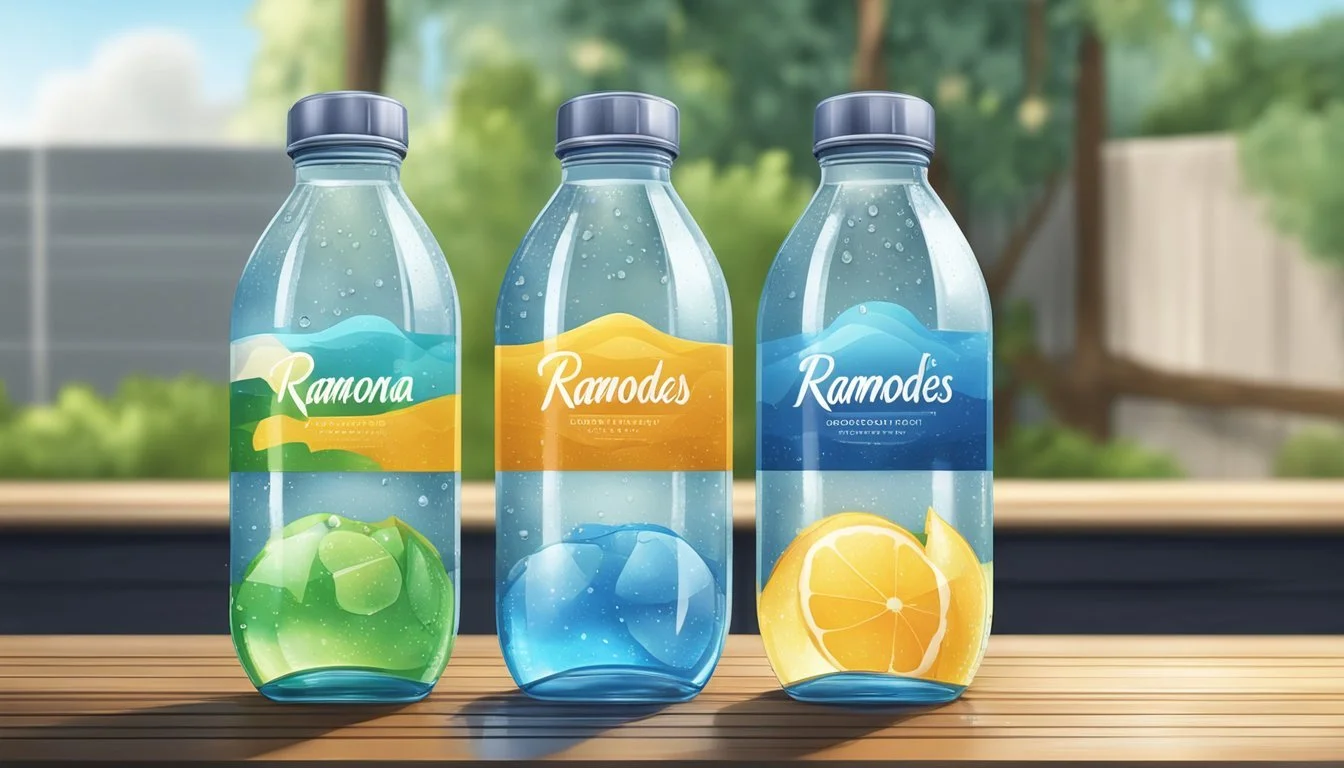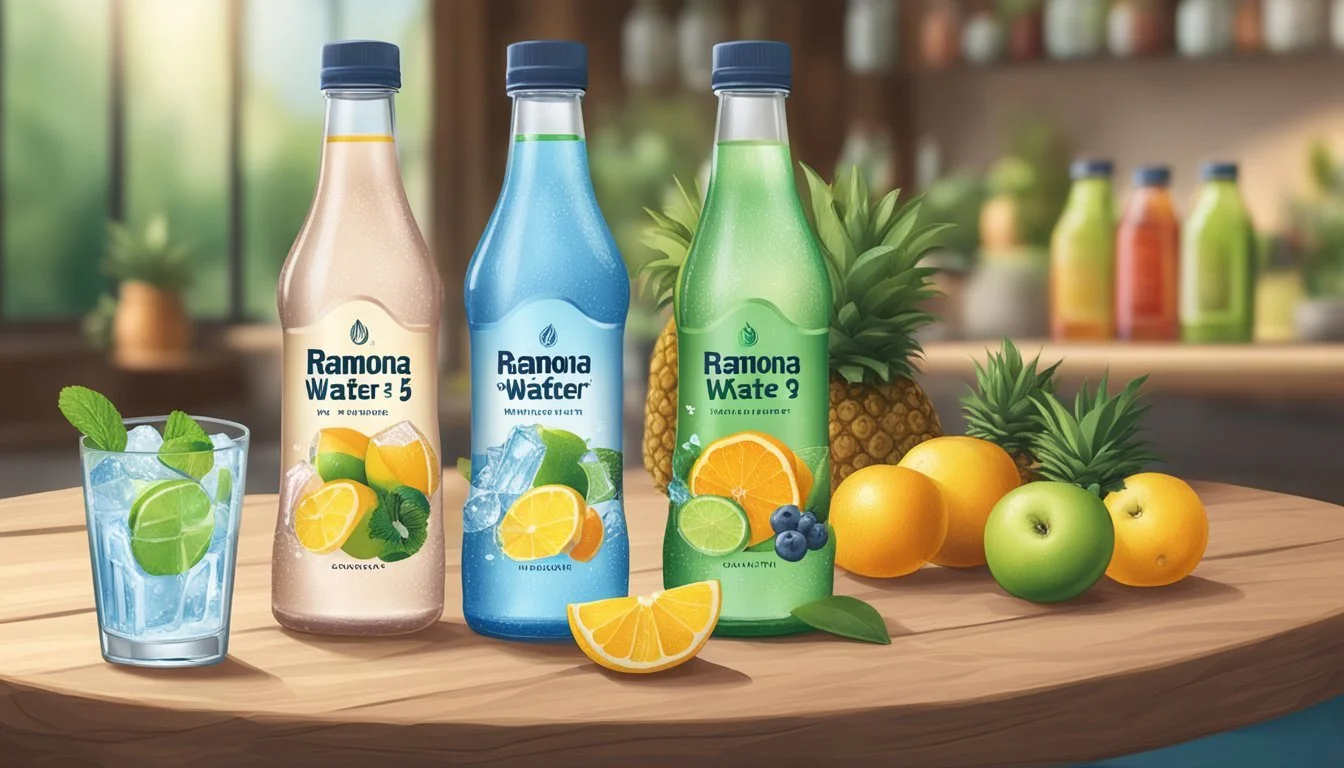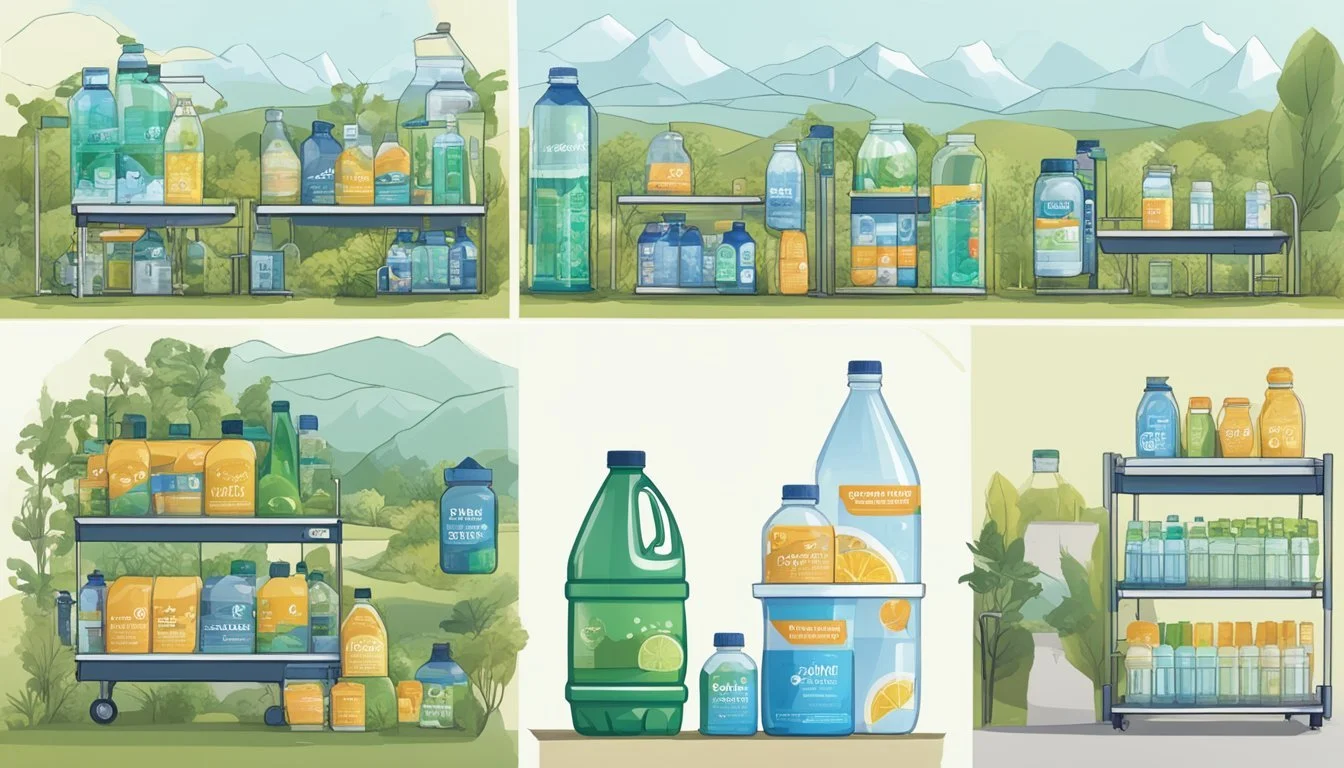Antipodes vs. Ramona
An Unbiased Comparison of Bottled Water
When it comes to choosing the best bottled water, Antipodes and Ramona stand out for very different reasons. Antipodes, sourced from a New Zealand aquifer, prides itself on offering premium quality water in a tasteful glass bottle. Its clean taste and high mineral content make it a popular choice for those who seek purity and elegance in every sip.
Ramona, a local favorite from California, is known for its reliable quality and refreshing taste. Although less expensive than Antipodes, Ramona delivers excellent value without compromising on taste. It's a dependable option for everyday hydration, offering a consistent flavor profile free of plastic undertones.
In comparing these two brands, it's clear that both Antipodes and Ramona offer distinct advantages. Antipodes appeals to those who want a luxurious drinking experience with its premium presentation and high mineral content. Meanwhile, Ramona provides a budget-friendly alternative with dependable taste, making it a practical choice for regular consumption.
Overview of Bottled Water
Bottled water is more than just a convenient hydration option; it has a rich history, diverse sources, and stringent regulations that ensure its quality and safety.
History and Growth of Bottled Water
Bottled water has grown rapidly over the past few decades. Initially, it was a luxury product. The industry has seen a meteoric rise, becoming a multibillion-dollar market globally.
The boom started in developed countries and quickly spread worldwide. Global sales increased 73% between 2010 and 2020. Marketing and convenience have driven this growth. Companies found innovative ways to cater to consumer preferences, including still, sparkling, and flavored varieties.
Understanding Water Sources
There are various sources for bottled water. Spring water comes from natural springs, while mineral water contains essential minerals from underground reservoirs. Tap water is another source, often purified through reverse osmosis or other filtration methods.
Groundwater and surface water are common sources. Quality and taste can vary depending on the source and treatment method. Distilled water, another type, is created by boiling and condensing the steam back into liquid, removing impurities.
Bottled Water Regulations
Bottled water regulations ensure safety and quality. In many countries, it is regulated by health and safety authorities. For instance, in the United States, the FDA oversees bottled water standards, similar to the EPA for tap water.
These regulations cover aspects like labeling, bottling practices, and source water protection. Regular inspections and testing are conducted to ensure compliance, focusing on contaminants and pollutants.
Comparative Analysis of Antipodes and Ramona
Antipodes and Ramona differ in their sources, mineral content, taste profiles, and safety measures. These distinctions determine their appeal to various consumers.
Source and Origin Comparison
Antipodes sources its water from an aquifer located 327 meters underground in the Bay of Plenty, New Zealand. The aquifer ensures a consistent and pristine supply.
Ramona typically sources its water from carefully selected mountainous springs in Italy. Known for their natural purity, these springs contribute to the water's distinct flavor.
Both brands prioritize sourcing from naturally protected environments, which helps maintain the integrity and quality of the water.
Mineral Content and Health Benefits
Antipodes is known for its balanced mineral content, with a pH level around 7. This neutral pH makes it suitable for individuals mindful of their acid-alkaline balance. The water contains essential minerals without being excessively high in any particular one.
Ramona usually offers an alkaline water option, with a higher pH. This is particularly beneficial for individuals seeking to counteract acidity in the body.
Both brands provide a good mix of minerals, supporting overall health and hydration. The choice depends on individual health goals and preferences.
Taste Profile
Antipodes has a clean, crisp taste often described as smooth and refreshing. It is available in either still or softly beaded sparkling forms, catering to diverse palates.
Ramona, with its spring water origin, offers a more nuanced taste influenced by its mineral composition. The water is often described as slightly sweet and balanced, with each variant providing a distinct sensory experience.
Taste can be subjective, but both brands have loyal followings that appreciate their unique flavor profiles.
Safety and Purity Testing
Antipodes employs stringent testing and purification processes. Sourced from deep within the earth, their water undergoes a natural filtration process, ensuring high standards of purity. Regular safety checks confirm its quality.
Ramona similarly ensures rigorous safety protocols, including advanced purification technologies. Their process includes frequent testing to meet international safety standards.
Both brands emphasize purity and safety, making them reliable choices for consumers concerned about water quality.
Packaging and Environmental Impact
Antipodes and Ramona bottled water utilize different packaging materials with distinct impacts on our environment. Understanding these differences is essential to evaluate their sustainability and ecological effects.
Types of Bottles and Sustainability
Antipodes uses glass bottles, which are known for their durability and reusability. Glass is fully recyclable and can be melted down to make new products without a loss in quality. This makes glass an environmentally friendly option since it can be reused multiple times and recycled indefinitely.
Ramona, on the other hand, predominantly uses plastic bottles. While plastic is lightweight and cost-effective, the downside is its environmental impact. Single-use plastic contributes significantly to pollution, although some plastic bottles are made from recycled materials which reduces waste. The Environmental Protection Agency highlights that recycling plastic is less efficient than glass.
Impact on Environment and Recycling Practices
Glass bottles from Antipodes have a lower carbon footprint due to their recyclability and the fact that they do not degrade in quality during the recycling process. It aligns well with sustainable practices, promoting long-term use and reducing waste in landfills as they can be reused without loss of integrity.
Plastic bottles used by Ramona have a higher environmental cost. The production and recycling process of plastic releases more CO2 and often leads to plastic pollution in oceans and landscapes. The Environmental Working Group indicates that while recycling efforts exist, only a small percentage of plastic bottles are recycled properly. Initiatives to increase reuse and improve recycling rates are essential for mitigating these adverse effects.
Both companies need to balance practicality and environmental responsibility in their packaging choices. While Antipodes's glass bottles are more sustainable, Ramona's plastic bottles are more common and accessible, highlighting the trade-offs between environmental benefits and consumer convenience.
Health and Hydration
When comparing Antipodes and Ramona bottled waters, it is crucial to examine their hydration capabilities, impact on health, and the role of essential minerals in these processes. Both brands offer their unique benefits and differences in various aspects such as mineral content and pH levels.
Essential Minerals for Hydration
Essential minerals such as calcium, magnesium, potassium, and sodium play a vital role in maintaining proper hydration levels.
Calcium helps with muscle function and nerve signaling.
Magnesium is important for muscle relaxation and energy production.
Potassium aids in fluid balance and muscle contractions.
Sodium is crucial for maintaining fluid balance in the body.
Antipodes and Ramona both have mineral compositions that impact overall hydration, but slight variations in these compositions can influence effectiveness.
Water and Health
The type of water consumed affects more than just hydration; it can influence overall health.
Mineral-rich water can support bodily functions, such as bone health due to calcium and muscle function from magnesium and potassium.
Electrolytes in these waters help maintain a balance of fluids, which is essential for proper hydration.
Some believe water with higher alkalinity can support immune function, although normal bodily functions do a good job of maintaining pH balance.
Understanding pH and Its Impact
The pH level of water can affect both taste and health benefits.
A higher pH, found in alkaline water, is thought to neutralize acid in the body and improve hydration.
The body, however, naturally regulates its internal pH, often making this benefit negligible for some people.
Antipodes and Ramona’s pH levels could vary, impacting not just hydration but also the perceived health benefits.
Choosing between them depends on individual preference for taste and personal health requirements.
Economic Factors and Accessibility
Economic factors and accessibility are crucial considerations when comparing bottled water brands. This section focuses on the cost differences between premium and value brands and the availability and distribution channels of Antipodes and Ramona.
Comparing Costs: Premium vs. Value Brands
Antipodes is positioned as a premium brand, known for its high-quality water sourced from pristine aquifers in New Zealand. The pricing reflects this, often costing significantly more per liter compared to value brands.
Ramona, on the other hand, is positioned as a more accessible option, with prices typically lower than those of Antipodes. This makes Ramona a favorite in grocery stores and among cost-conscious consumers.
Price Comparison:
Antipodes: Ranges from $4 to $6 per liter
Ramona: Ranges from $1 to $2 per liter
The stark price difference highlights the premium nature of Antipodes and the value of Ramona.
Availability and Distribution
Antipodes is less widely available than Ramona due to its premium positioning and higher price point. It is primarily found in upscale grocery stores, specialty shops, and high-end restaurants.
Ramona's distribution network is broader, with availability in numerous grocery stores, convenience stores, and online retailers. This widespread distribution ensures greater accessibility for a variety of consumers.
Distribution Channels:
Antipodes: Upscale grocery stores, specialty shops, high-end restaurants
Ramona: Mass-market grocery stores, convenience stores, online retailers
The different distribution strategies underscore the brands' target markets, with Antipodes appealing to a niche, premium segment and Ramona catering to a broader, budget-conscious audience.
The Consumer Experience
Choosing between Antipodes and Ramona bottled water hinges on their brand perception and taste experience while ensuring the chosen water aligns with personal preferences.
Brand Perception and Taste Experience
Antipodes is often regarded as a premium option, frequently praised by water sommeliers for its crisp, clean taste. Many consumers describe it as refreshing and pure, devoid of any residual tang or plastic aftertaste.
On the other hand, Ramona, though less prestigious, has its dedicated fans. The taste is usually viewed as neutral but reliable, making it a solid everyday choice. While not as sophisticated as Antipodes, Ramona provides consistent quality that many appreciate.
Both brands strive to offer products that are free from impurities, yet consumers may notice distinct differences in how the water feels and tastes, impacting their final choice.
Choosing the Right Bottled Water for You
When selecting between Antipodes and Ramona, consider your priorities. If you value a high-end, refined taste and are willing to pay a premium, Antipodes is the ideal match. Its reputation among water sommeliers and its pure taste make it suitable for special occasions or those who favor luxurious products.
If affordability and reliability are key, Ramona offers a more economical choice without compromising on safety or quality. This brand is perfect for those who need a dependable and everyday water option.
In the end, the decision may come down to how much weight you place on factors like cost, taste, and the prestige associated with the brand.





